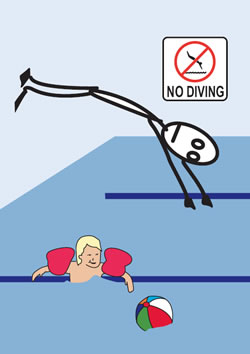
WHAT IS NEGLIGENCE?
The concept of negligence is not new. It goes back to the 1930s, when it
was first defined in the courts in the case of Donoghue versus Stevenson
in the House of Lords. This case has been used to identify negligence
ever since.
During this case, one of the law lords, Lord Atkin, explained that the law
governing complaints and their remedies is limited. He explained that
you “must take care to avoid acts or omissions which you can reasonably
foresee would be likely to injure your neighbour”.
This then leads to the obvious question: who is my neighbour? Lord
Atkin’s view was that your neighbours are people so closely and directly
affected by what you do or don’t do, that you should bear the impact of
your actions on them in mind.
It means everyone you are likely to come into contact with, as a car
driver, as an employer, as an occupier of land and buildings which
people visit – pretty much everyone, in fact.
In short, what defines
negligence
is whether you do something which
you can reasonably foresee will injure someone else who is likely to be
affected by your actions, or your lack of action.